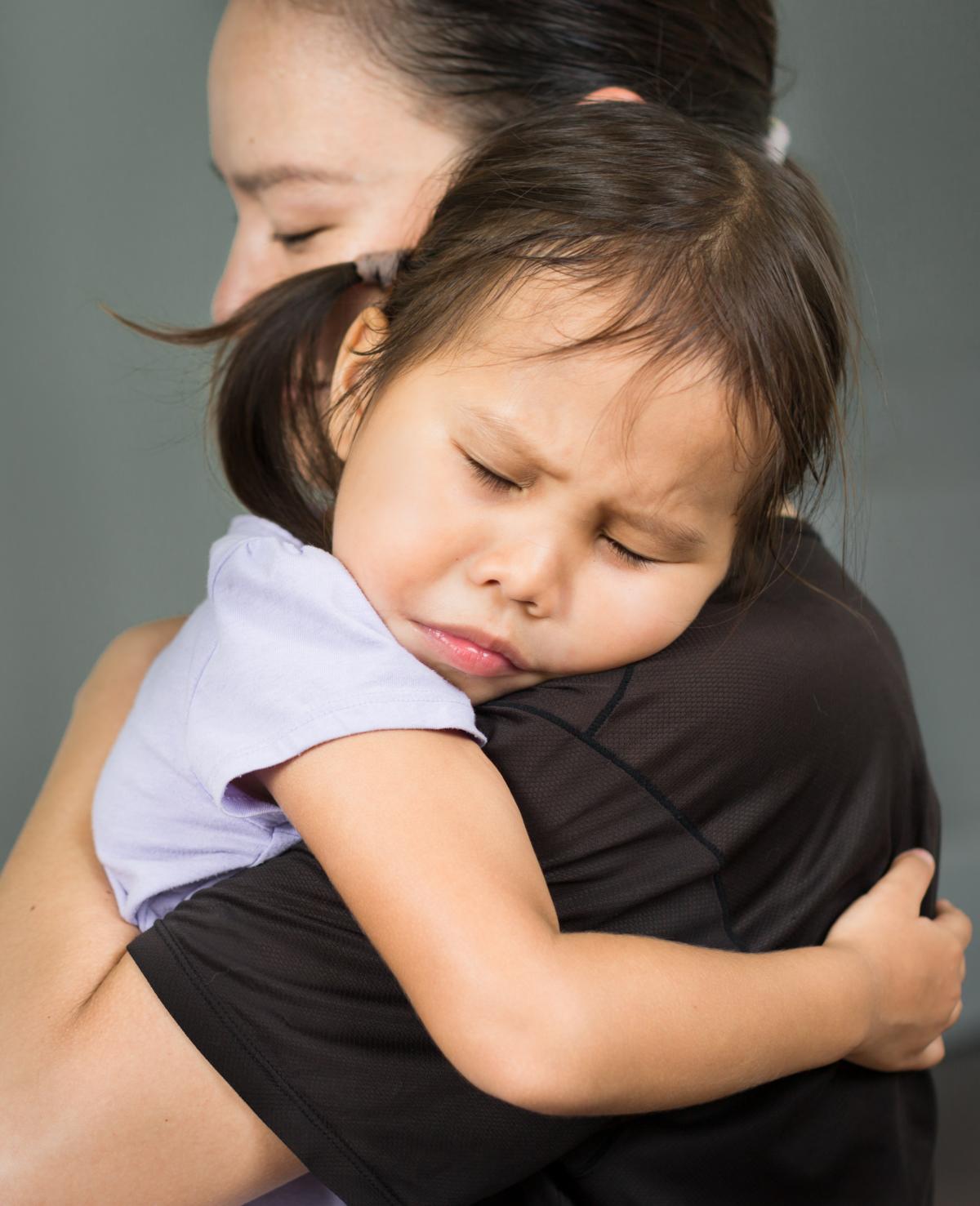How To Get an Order of Protection

The National Coalition Against Domestic Violence reports that nearly 20 people per minute are physically abused by a partner in the United States, resulting in approximately 10 million victims of domestic violence per year nationwide. Domestic violence is considered the physical, verbal, emotional, or financial abuse of a domestic partner or family member. While many of the victims of this abuse are women, people of all genders can experience domestic violence and deserve to be protected from further harm. An order of protection (or restraining order) can help victims maintain the necessary distance from their abuser in order to escape a dangerous situation.
The following information regarding orders of protection can help victims make long-term plans for their safety. However, if you or a loved one are experiencing family violence or abuse in the home and are in need of immediate assistance, the National Domestic Violence Hotline can help. Call 1-800-799-SAFE to get in touch with a representative.
What Does a Protective Order Do?
One of the first means of protection a victim of domestic violence can seek is called a protective order (sometimes called a restraining order– these terms are often used interchangeably). Of course, no ruling from a judge is a 100% safeguard against violence, but there are many tangible benefits of seeking an official restraining order against an abusive partner. For example, a protective order provides substantial legal consequences for abusive behavior. If a judge upholds an application for a permanent protective order, the abuser can face severe consequences for violating the provisions of said order. These potential consequences are often enough to keep abusive individuals away from victims and their families.
Most importantly, protective orders can help victims of domestic violence find a safe environment free of violence. When victims are free of the threat of immediate physical or emotional harm, they can take advantage of the many resources available to them to seek justice and healing.
Common Provisions of Restraining Orders
Restraining orders may carry specific provisions that both parties must obey. Failure to abide by these provisions will result in legal consequences. Some of the most common provisions of restraining orders include:
Stay Away
The first line of defense against an abusive partner is a minimum physical distance specified by a stay-away provision. These provisions specify the minimum distance at which a person who has been served a restraining order (the respondent) must remain from the victim; in most states, this distance is 100 yards. This distance applies to the victim’s person, home, workplace, or school.
No Contact
Physical proximity is not the only method for abusers to harass or threaten their victims. A no-contact provision in a protective order prohibits the respondent from contacting the victim or the victim’s family for the duration of the order. This provision includes digital contact such as phone calls, texts, emails, or social media messages.
Peaceful Contact
Peaceful contact provisions allow for limited communication with the victim and/or minor children. If the respondent and the victim share children together, the victim may seek a peaceful contact provision to facilitate temporary custody or the transfer of assets. If at any point the contact becomes aggressive, threatening, or harmful, however, the protective order may be changed to absolutely no contact.
Move Away
Many victims of domestic violence are abused by a spouse or a live-in, long-term partner. A move-away provision in a protective order applies to persons who share a residence with the victim. This provision will require the respondent to move out of the shared residence immediately.
Counseling
Some protective orders may require the respondent to seek counseling or other mental health programs (for example, anger management or substance abuse treatment). In the order, the judge will specify the type of counseling that must be received and the total duration of the treatment.
Firearm Restrictions
A firearm restriction provision will require the respondent to surrender any firearms in their possession. This provision may result in the confiscation of any firearms owned by the respondent and will prohibit the respondent from purchasing a firearm until the protective order has expired.
Different Types of Protective Orders
Not every protective or restraining order is the same. Depending on the needs of the victim, protective orders may have varying provisions or durations. There are three main types of protective orders that victims of domestic violence can seek. The type of protective order victims of domestic violence choose primarily depends on whether immediate, short-term protection is necessary. These orders can be filed and approved quickly, while longer-term protective orders will need to go through the court system to be approved.
Temporary Protection Order
The first type of protective order is a temporary protection order. Temporary protection orders are meant to provide immediate protection to victims and their families. These orders are filed ex parte (with only one party present, generally the victim). The court will serve the abuser with a temporary protection order, which will become effective immediately. Typically, temporary protection orders last only a few days (enough to protect the filer before the permanent protection order is heard in court). After a temporary restraining order is granted, both parties are given a date for the hearing for a permanent protection order.
Permanent Protection Order
While temporary protection orders are filed ex parte, a full protection order case must be heard in front of both parties. When the temporary order is served, both parties will be summoned to court, where the temporary protection order will be either maintained or terminated. In some cases, a judge may add specific provisions to the permanent order. Because many parties in these cases also share children together, at this point, the judge will also likely specify the child custody arrangements that will apply going forward.
Emergency Protection Order
Unlike temporary or permanent protection orders, emergency protection orders are mainly requested by police officers or other law enforcement responding to emergency domestic violence situations. For the most part, emergency protection orders are only applicable for a short time, and victims will likely need to pursue a temporary or permanent protection order once it has expired. In these cases, the protection order is often heard at the same time as the criminal arraignment.
How Are Protection Orders Enforced in Different States?
What happens if one or both of the parties involved in a protection order move across state lines? All states in the country must enforce the Full Faith & Credit Clause of the Constitution. This clause requires all states to give “full faith and credit” to legal decisions made in other state courts, including protection and restraining orders. This means that if a victim of abuse moves out of state to escape their abuser, any valid restraining orders are still applicable in their new place of residence. In some cases, abusers may stalk their victims across state lines, and it will be the task of local law enforcement to enforce any existing protective orders.
What Happens if the Protection Order is Violated?
A restraining order is a serious legal document and can result in severe ramifications if violated. Violations can take the form of a respondent doing something the court has ordered them not to do or, conversely, failing to do something the court has ordered them to do. Depending on the violation, either law enforcement or the legal system will enforce the protective order.
Police enforcement
If victims are in immediate need of assistance, they should call the police as soon as possible or report the incident shortly after. Police enforcement of protective orders is often necessary when someone fails to adhere to a no-contact provision or violates the proximity provision. Depending on how severe the violation is, the respondent of the order may later be charged with a misdemeanor or felony.
Court enforcement
If a victim is not in immediate physical danger as a result of a violation of the protective order, they may opt to seek court enforcement. This means that the victim would file a “motion for contempt” in the court where the order was initially filed. At this point, the court would hold a hearing to determine if there was a violation of the protective order. Court enforcement is often most appropriate when it comes to violations of provisions that would be difficult for law enforcement to enforce (for example, enrollment in anger management or failure to pay child support).
How To Get a Protective Order
Like many other legal processes, getting a restraining or a protective order may seem intimidating. The following steps cover the basics of how to get restraining orders; however, if you have specific questions pertaining to your situation, you can consult with an attorney or contact a domestic violence organization.
Get the help you need
Many resources exist to help domestic violence victims get the help they need. Once you are in a safe environment, you can utilize the internet and/or resources from domestic violence organizations to learn more about filing for a protective order.
File an application with the court
The next step is to file your application for a temporary protective order (either on your own or with the help of a legal representative). Forms for filing a protective order can be found online or at the local courthouse. Once your application for a temporary protective order is filed and approved by a judge, the order will become valid as soon as it is served.
Find a family lawyer
While some victims of domestic violence choose to undertake legal proceedings by themselves, the reality is that a qualified family lawyer can help make the process of filing for a permanent protective order much simpler for victims and their families. If you need help finding the right attorney for you, review the information on Expertise.com’s legal database at the end of this article.
Gather evidence for hearing
With the help of your attorney, you will begin to gather any available evidence of the physical, emotional, psychological, or financial abuse you have suffered. The clearer the evidence, the more likely the judge is to grant a permanent protective order. Evidence could include photos, videos, voice messages, emails, screenshots, or witness testimonies.
Set date for hearing for permanent restraining order
Temporary protective orders only last for a short amount of time (typically fourteen days from the date served). After this point, if victims would like to pursue a permanent or long-term restraining order, there will need to be a hearing with both parties present. Soon after a temporary order is granted, the court will set an official date for this hearing.
Seek permanent protective order
When your court date arrives, your family lawyer will argue to the judge that there is sufficient cause to grant a permanent protective order. If the judge grants a permanent protective order, this is also the time that the provisions of the protective order will be specified (or modified from the initial order).
Resources for Victims of Violence
If you or a loved one are experiencing domestic violence, many organizations can help you leave a dangerous situation and provide the resources you need. In addition to these resources (which are available nationwide), there may be other organizations in your city or state that can help.
National Domestic Violence Hotline
For 25 years, the National Domestic Violence Hotline has provided services to survivors in abusive relationships. On average, the Hotline receives around 3,000 calls, chats, and texts a day, providing services to millions in need. Trained advocates at the Hotline provide survivors with support, resources, safety planning, and referrals. The National Domestic Violence Hotline is free, confidential, and available 24/7. To get in contact, you can use the online chat, text “START” to 88788, or call 1-800-799-SAFE.
National Child Abuse Hotline/Childhelp
Children are some of the most frequent victims of family violence in the United States. The National Child Abuse Hotline (also known as ChildHelp) is an organization dedicated to helping children escape domestic abuse. If you are a child experiencing family violence, you can contact a counsel at the ChildHelp Hotline by calling or texting 800-422-4453 or by sending a direct message in the live chat. If you are an adult who would like to report an instance of child abuse, you can also contact the hotline to find out where to make your report.
The Initiative
The Initiative (formerly known as the Domestic Violence Initiative) is an organization that seeks to address the “intersection of cross-disability issues and abuse.” Unfortunately, individuals with a disability may be more vulnerable to abuse and may require specialized resources to thrive after an abusive domestic situation. If you are an individual with “physical, sensory, cognitive, developmental, mental health, or health-related” disabilities, The Initiative can help with victim advocacy, education, resources, and referrals. To reach the advocates at The Initiative, call 303-839-5510 Monday-Friday from 9 to 5.
How To Find a Family Lawyer
If you are fleeing family violence and need to file for a protective lawyer, a qualified family lawyer can help. Expertise.com offers a comprehensive database of qualified family lawyers as well as a free concierge service that will connect you with the top-ranked providers for your needs. Call 848-BookPro (848-266-5776) to find the right attorney for your claim.
Expertise.com StaffAuthor
Step into the world of Expertise.com, your go-to hub for credible insights. We don't take accuracy lightly around here. Our squad of expert reviewers, each a maestro in their field, has given the green light to every single article you'll find. From rigorous fact-checking to meticulous evaluations of service providers, we've got it all covered. So feel free to dive in and explore. The information you'll uncover has been stamped with the seal of approval by our top-notch experts.




